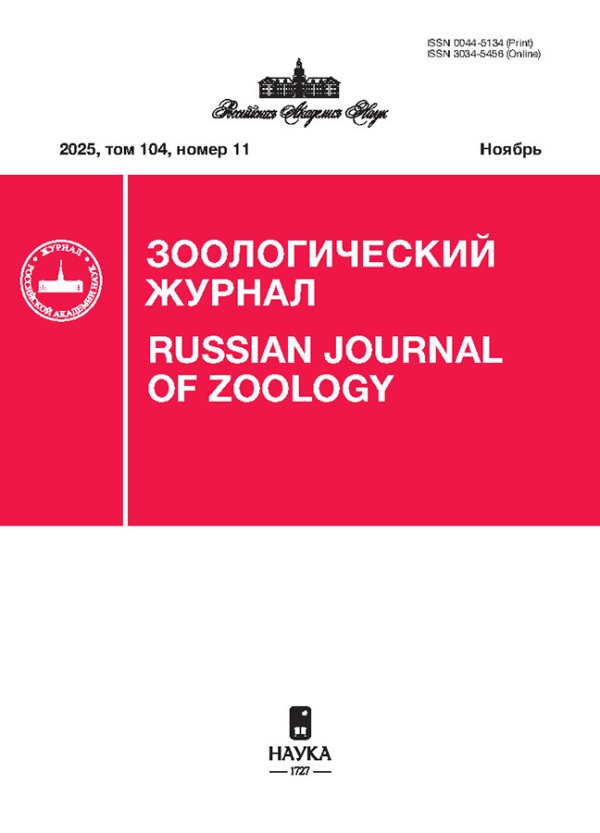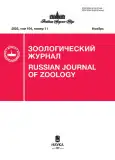Russian Journal of Zoology
"Zoologicheskiy zhurnal" is Russia's oldest scientific periodical covering all problems of zoology. In the field of theoretical zoology, the journal pays special attention to the laws of evolution and phylogeny of animals, the problem of species and speciation, taxonomy, individual development of animals, evolutionary and functional morphology, embryology, histology, cytology, bionics, problems of ecology, biocenology and biological productivity of terrestrial and aquatic fauna, questions of zoogeography, origin and development of faunas. Among practical issues, the journal broadly covers the scientific foundations of fishing, hunting, pest control of cultivated and wild plants, human parasites and economically useful animals. The journal publishes works on the problems of fauna reconstruction and the protection of the animal world, as well as on the use of animals to determine water quality and to purify water.
In a special section, articles on methods of zoological research are printed. The journal covers the activities of Russian and foreign zoological institutions, their problems and achievements, and also publishes reports on conferences, expeditions, etc. The bibliography section publishes reviews of the most significant books published in Russia and abroad on various problems of zoology.
The journal is intended for specialists working in the field of theoretical and applied zoology, including medical and veterinary parasitology, plant protection, as well as for teachers, postgraduates.
At the moment, the journal is published mainly in Russian, and some articles in English.
Media registration certificate: ПИ № ФС 77 – 80756 от 07.04.2021
Current Issue
Vol 104, No 11 (2025)
ARTICLES
FAUNISTIC AND TAXONOMIC DATA ON ORIBATID MITES (ACARI, ORIBATIDA) FROM THE KON CHU RANG NATURE RESERVE, VIETNAM
Abstract
 3-14
3-14


BRYOCAMPTUS (BRYOCAMPTUS) OESCULUS SP. N. (COPEPODA, HARPACTICOIDA) FROM THE HYPORHEIC COMPLEX OF THE ISKAR RIVER, BULGARIA
Abstract
 15-29
15-29


COLD RESISTANCE AND NORTHERN RANGE LIMIT OF THE GRASS SNAKE (NATRIX NATRIX, SQUAMATA, REPTILIA)
Abstract
 30-39
30-39


DURATION OF TONIC IMMOBILITY ALLOWS TO PREDICT THE BEHAVIOR OF A YOUNG CAPERCAILLIE (TETRAO UROGALLUS, AVES) WHEN ENCOUNTERING A PREDATOR
Abstract
 40–50
40–50


POLYMELIA IN A COMMON TEAL (ANAS CRECCA) IN KAMCHATKA
Abstract
 51-57
51-57


COMPARATIVE MORPHOLOGY OF THE SKIN OF THE WATER DEER (HYDROPOTES INERMIS) AND MUNTJACS (MUNTIACUS SPP.), CERVIDAE, ARTIODACTYLA
Abstract
 58-84
58-84


FUR STRUCTURE OF THE MUMMY OF A HOLOCENE BROWN BEAR (URSUS ARCTOS LINNAEUS, 1758) FROM PERMAFROST DEPOSITS OF YAKUTIA
Abstract
 85–97
85–97


GENETIC VARIABILITY AND SUBSPECIFIC DIFFERENTIATION OF THE STEPPE LEMMING (LAGURUS LAGURUS PALL., CRICETIDAE, RODENTIA), BASED ON AN ANALYSIS OF VARIATIONS IN THE MITOCHONDRIAL CYTOCHROME b GENE
Abstract
 98-105
98-105


MORPHOLOGICAL VERIFICATION OF THE SUBGENERIC STATUS OF THE OLKHON MOUNTAIN VOLE (ALTICOLA OLCHONENSIS LITVINOV, 1960, ARVICOLINAE, RODENTIA) BASED ON AN ANALYSIS OF THE SHAPE VARIATIONS OF THE THIRD UPPER MOLAR (M3)
Abstract
 106–124
106–124












